|
Canine front limb amputation can be a challenging experience for both pet owners and their doggos. However, with the right knowledge and support, a three-legged dog can lead a happy, active life. In this guide, we'll explore some rehabilitation options, lifestyle adjustments, and practical tips to aid and assist your resilient three-legged doggo. Rehabilitation Options Physiotherapy Engaging in physiotherapy is crucial for a dog's successful recovery post-amputation. Some postural adaptations are considered normal, such as the remainder front limb taking up residency more toward the middle of the body, and other movement patterns that are considered compensatory and need addressing. Sessions that focus on targeted exercises can help improve strength, flexibility, and balance. It is advisable to seek the guidance of a canine rehabilitation specialist or physiotherapist to evaluate the aforementioned adaptations and develop a customised program that caters to the needs of your canine. Assistive Devices Explore the use of assistive devices such as orthopaedic braces or custom prosthetics designed specifically for front limb amputees. These devices aid in mobility, providing support and reducing strain on the remaining limbs. Hydrotherapy Water-based exercises can be highly beneficial for amputee dogs, however, the underwater treadmill is generally not recommended for front-limb amputees. Other hydrotherapy options such as swimming are better suited and can promote muscle strength without putting excessive pressure on joints. Consulting with a friendly canine physiotherapist or hydrotherapist first will help Lifestyle Adjustments Modified Environment Make your home more accessible by removing obstacles and creating a safe space for your three-legged friend. Ramps and non-slip surfaces can help your dog navigate more comfortably. Weight Management Maintaining a healthy weight is crucial for an amputee dog's overall well-being. Use the body condition scale to determine if your dog sits within a healthy weight range and adjust snacks and treats accordingly. Mental Stimulation Enrich your dog's life with mental stimulation through interactive toys, puzzle feeders, and engaging activities. Keeping their mind active contributes to a happy and well-adjusted canine companion. Emotional Support and Monitoring Patience and Encouragement Be patient and supportive during your dog's adjustment period. Encourage their efforts and celebrate small victories. Positive reinforcement helps build confidence and strengthens the bond between you and your furry friend. Regular check-ups
Regular checkups with a physiotherapist or friendly veterinarian can help monitor how your doggo is coping and adjusting to a three-legged life. They also have a wealth of knowledge and can assist and guide you through the entire process and set realistic expectations for you as you move through the journey with your three-legged friend. While the journey of adapting to life with a front limb amputation may seem daunting, countless success stories showcase the resilience and adaptability of three-legged dogs. With a combination of rehabilitation, lifestyle adjustments, and unwavering support, your doggo can lead a fulfilling and happy life. Remember, each dog is unique, so tailor your approach based on their individual needs, and embrace the joy of sharing a life with a three-legged doggo. The bond between humans and dogs transcends the ordinary, and in times of need, our doggo friends become more than just companions—they become lifelines. Canine lift assisting is a critical aspect of this symbiotic relationship, offering tangible benefits for injury management and providing invaluable support for senior dogs. Join us on a journey through evidence-based research, unravelling the importance of this practice for both the recovering athlete and the aging canine companion.
Injury Management and Canine Lift Assisting In the world of sports and physical activity, injuries are inevitable. Whether you're a professional athlete or a weekend warrior, the road to recovery can be challenging. There is no difference between human and canine recovery. Canine lift assisting is a practice gaining recognition for its significant impact on injury management. Reducing Strain on Muscles and Joints Canine lift assisting involves the strategic use of a harness or support system, distributing the weight of the injured patient. This not only aids in maintaining proper body mechanics but also reduces strain on muscles and joints during movement. Evidence-based studies have demonstrated the positive effects of such assistance, showcasing faster recovery times and decreased risk of secondary injuries. Psychological Well-being and Motivation Beyond the physical aspects, the emotional support provided by a furry friend cannot be overstated. Research has indicated that companionship during rehabilitation positively influences psychological well-being, fostering a motivated mindset crucial for successful recovery. Canine Lift Assisting in Senior Dogs As our canine companions gracefully age, they often face challenges similar to those encountered by aging humans. Canine lift assisting becomes an invaluable tool in ensuring the well-being of our senior four-legged friends. Arthritis Management Arthritis is a common ailment among senior dogs, causing pain and restricting mobility. Research has highlighted the positive impact of canine lift assisting in managing arthritis symptoms. By providing support and redistributing weight, these systems alleviate pressure on arthritic joints, contributing to an improved quality of life for senior dogs. Maintaining Muscle Mass and Strength Aging often leads to muscle atrophy in dogs, affecting their overall strength and stability. Canine lift assisting aids in maintaining muscle mass by facilitating controlled movement, ultimately supporting senior dogs in retaining their strength and mobility for a longer duration. The Human-Canine Bond; A Therapeutic Force The emotional connection between humans and dogs is a powerful force, one that extends beyond the realms of simple companionship. This bond becomes a therapeutic tool in itself, fostering an environment conducive to healing and well-being. Stress Reduction and Anxiety Management Research consistently demonstrates the stress-reducing effects of interacting with dogs. Incorporating canine lift assistance into recovery routines provides physical support and contributes to anxiety reduction, a crucial factor in the overall healing process. Enhanced Social Interaction for Seniors For senior individuals, the companionship of a dog can combat feelings of loneliness and isolation. Canine lift assisting adds an extra layer of connection, encouraging seniors to engage in physical activities with their furry friends and promoting a healthier and more active lifestyle. Lift Assisting Options For Everyday Use
Help ‘Em Up Harness The Help ‘Em Up Harness is a unique full-body lifting device that assists owners with aging dogs to remain active when arthritis, hip dysplasia, muscle loss, or surgical repair impairs a pet’s mobility and physical strength for everyday functions – from getting up off the floor, up and down the stairs, or in and out of cars. Veterinarians, neurologists, and nurses use the harness for dogs rehabilitating after surgery or recovering from injuries. By placing a handle over the hips and the shoulders, the Help ‘Em Up harness safely lifts from underneath the torso, allowing you to help your dog get up and overcome the daily obstacles of aging and getting around. The Help ‘Em Up Harness will also help you lift without stress by using the built-in handles, as the Help ‘Em Up harness is designed to distribute weight over the large support surfaces of the chest and hind quarters. Veterinarians, surgeons, nurses, and rehab specialists find the product to be a useful aid in helping their patients be lifted more comfortably post-surgery and rehabilitated more easily. Belly Slings
Belly slings for dogs serve as invaluable aids, providing support and assistance to pets with mobility challenges. These slings are designed to cradle the dog's belly, allowing owners to help their furry friends navigate various terrains comfortably. Primarily used for dogs recovering from surgeries, experiencing arthritis, or facing general mobility issues, these slings help distribute weight evenly, reducing strain on the dog's legs and joints. Constructed from durable and washable materials, belly slings are adjustable to accommodate different dog sizes. The slings typically feature handles for owners to grasp, enabling them to assist their dogs in standing, walking, or climbing stairs. This not only aids in the rehabilitation process but also fosters a sense of security for the canine companions. The versatility of belly slings extends beyond medical purposes; they can be instrumental in supporting aging dogs, providing a practical solution for pet owners to maintain their dogs' quality of life. As a simple yet effective tool, belly slings contribute to the well-being of dogs, fostering a bond of trust and care between pets and their devoted human companions. Ramps
Access ramps for dogs play a crucial role in enhancing mobility and inclusivity for our canine companions. These ramps are specifically designed to provide a gentle incline, allowing dogs of all sizes and abilities to access elevated surfaces with ease. Whether it's helping aging dogs climb into a car or enabling smaller breeds to reach elevated spaces, these ramps contribute to the overall well-being of our furry friends. One key feature of dog access ramps is their portability. Many ramps are lightweight and foldable, making them convenient for on-the-go use. This ensures that dogs can enjoy various environments without unnecessary strain on their joints or muscles. Additionally, the surface of these ramps is often designed with non-slip materials to prevent accidents and provide a secure grip for the dogs, instilling confidence as they navigate inclines. Access ramps cater to a diverse range of canine needs, from assisting those with mobility challenges to simply making daily activities more accessible for dogs of all ages. As an indispensable tool in the realm of pet care, dog access ramps exemplify the commitment to fostering a supportive and inclusive environment for our four-legged companions. The practice of canine lift assisting emerges as a vital and transformative element in the intersection of human and canine well-being. From aiding in injury management for athletes to offering indispensable support for senior dogs, the evidence-based benefits are clear. As we continue to unravel the layers of this symbiotic relationship, it becomes evident that the bond between humans and dogs is not just heartwarming; it's a therapeutic force that contributes significantly to the health and happiness of both parties involved. Let us celebrate the incredible journey of recovery and aging with our doggo companions by our side, lifting us up in more ways than one.
If you want to learn more tricks and tips and be involved in a community of like minded individuals, join our facebook group at: Matthew Ireland Hydrotherapist Unleashing the boundless energy of our four-legged friends can be a delightful and rewarding experience. While playing fetch with a ball is a classic canine pastime, there are countless other ways to keep your dog active and engaged. In this blog post, we'll explore age-appropriate exercises for puppies, middle-aged, and senior dogs that go beyond the traditional game of fetch. Get ready to witness tails wagging in excitement as we dive into seven different activities for each life stage! Puppy Playtime (Up to 1 Year): Puppy Playdates Organise playdates with other friendly puppies to encourage socialisation. These interactions stimulate physical activity and mental engagement, helping puppies develop crucial social skills. Agility Training Set up a mini agility course using lightweight, age-appropriate obstacles. Puppies can weave through poles, jump over low hurdles, and crawl through tunnels to enhance coordination and balance. Tug-of-War with Puppy Toys Invest in soft tug toys designed for puppies. Engaging in a gentle game of tug not only provides physical exercise but also strengthens the bond between you and your furry friend. Interactive Puzzle Feeders Incorporate mealtime with puzzle feeders that dispense kibble as your puppy solves the puzzle. This mental stimulation is as important as physical exercise for a growing mind. Hide-and-Seek Hide treats or toys around your home or in your backyard, encouraging your puppy to use their nose to find hidden treasures. This activity taps into their natural instincts and keeps them mentally active. Introduction to Water Play If your puppy enjoys water, introduce shallow kiddie pools for a splashy playtime. Supervised water play is a great way to cool off during warmer days while being gentle on developing joints. Short Leash Walks Take short, exploratory walks on a leash to introduce your puppy to different scents and environments. Gradually increase the duration as they grow, building stamina and reinforcing leash manners. Middle-Aged Marvels (1 to 8 Years): Canine Cardio Circuit Develop a circuit-style exercise routine by combining activities like short sprints, jumping over low obstacles, and weaving through cones. This dynamic workout enhances cardiovascular health. Hiking Adventures Explore nature trails and hiking paths with your dog. The varied terrain provides an excellent workout, engaging different muscle groups and stimulating their senses with new scents. Balance Exercises Use balance pads or cushions to create stability challenges for your dog. These exercises help improve core strength and stability, benefiting their posture and overall well-being. Canine Fitness Classes Enrol your dog in a canine fitness class that focuses on strength, balance, and coordination. These classes, often offered by professional trainers, can be tailored to your dog's individual needs. Canine Parkour Transform your neighbourhood stroll into a parkour adventure. Encourage your dog to jump over low walls, balance on beams, or navigate through natural obstacles, turning an ordinary walk into a mental and physical workout. Scent Work Challenges Create scent trails using treats or toys in your backyard or home. Engaging your dog's sense of smell in this way provides mental stimulation and satisfies their natural hunting instincts. Yoga Together Incorporate dog-friendly yoga poses into your exercise routine. Simple stretches and poses can be adapted for your dog to participate, promoting flexibility and relaxation for both of you. Senior Citizen Canines (8 Years and Older) Gentle Water Aerobics If your senior dog enjoys water, consider gentle swimming or hydrotherapy. Buoyancy reduces stress on aging joints, providing a low-impact yet effective exercise option. Slow-Paced Nature Walks Adjust the pace of your walks to accommodate your senior dog's needs. Leisurely strolls allow them to explore their surroundings without overexertion, promoting joint health and mental well-being. Balanced Diet and Treat Puzzles Maintain a balanced diet to support your senior dog's changing nutritional needs. Use treat puzzles to keep their minds sharp and provide a tasty reward for mental effort. Therapeutic Massage Sessions Learn basic canine massage techniques to soothe achy joints and muscles. Regular massages can improve circulation, reduce stiffness, and enhance the overall well-being of your senior companion. Gentle Obedience Refresher Incorporate light obedience training into your routine to keep your senior dog's mind active. This reinforces their training while providing mental stimulation and a sense of accomplishment. Warm-Up and Cool-Down Routines Implement gentle warm-up and cool-down routines before and after activities. This helps prevent injuries and ease any discomfort associated with arthritis or age-related conditions. Adaptive Brain Games Invest in puzzle toys designed for seniors that cater to their cognitive abilities. These games engage their brains and provide mental stimulation without physical strain. Dogs of all ages thrive on engaging in activities that cater to their physical and mental well-being. By exploring a variety of exercises beyond the traditional ball-fetching game, you can enhance your bond with your furry friend while promoting a healthy and happy lifestyle. Whether you're raising a spirited puppy, enjoying the prime years with your middle-aged companion, or cherishing the golden moments with a senior dog, these diverse activities ensure that tails keep wagging with joy! If you want to learn more tricks and tips and be involved in a community of like minded individuals, join our facebook group at: Matthew IrelandHydrotherapist |
AuthorJoanna Whitehead Archives
June 2024
Categories
All
|


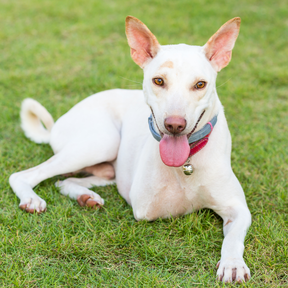
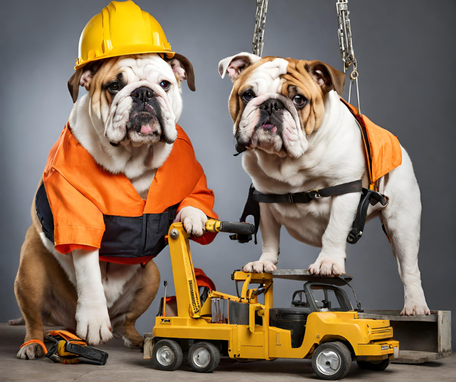
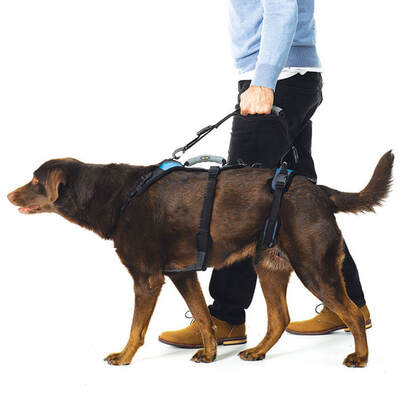
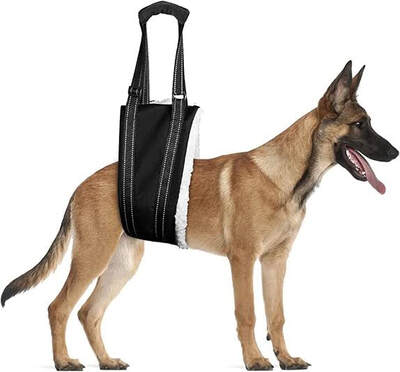
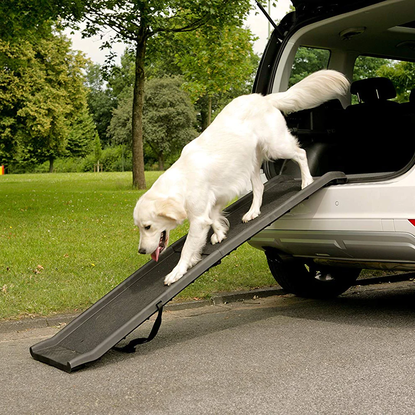
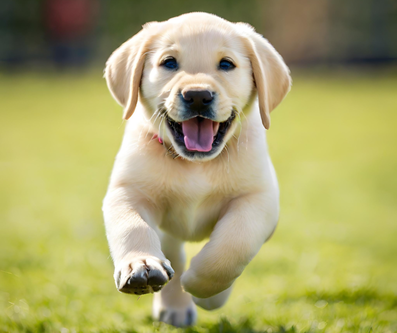
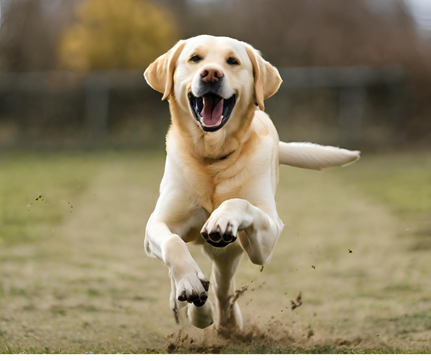
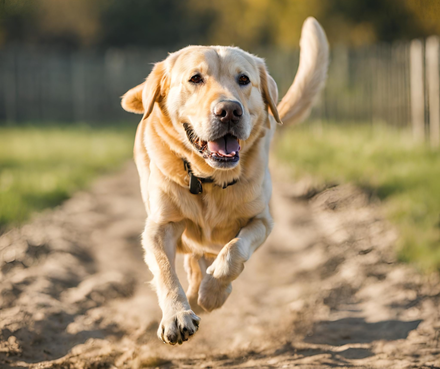
 RSS Feed
RSS Feed
